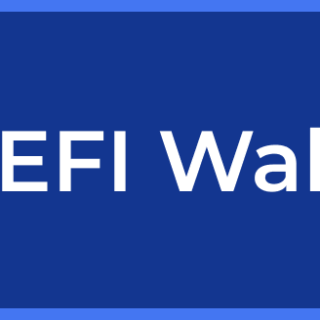Intro to multichain technology
Multichain technology
In the world of discrete blockchain networks, many protocols – blockchains, DeFi apps, bridges, etc. – aim to allow users to move assets from one network to another. This is simply due to the fact that we are in the multichain era – investors often want to trade an asset that exists on one blockchain for another asset that exists on a different blockchain. For this reason, there must exist frictionless ways for these blockchains to interact with one another. Over the years, multiple solutions have surfaced that accomplish what is known as blockchain interoperability. It is wise to learn carefully about the different blockchains and the ways in which they connect to one another in order to determine the best methods for interacting with your crypto investments.
Multichain technology refers to the ability of an app or protocol to connect to more than one blockchain, making it interoperable with information on both chains. A wallet like XDEFI Wallet is considered a multichain wallet because it can hold assets from Bitcoin, Ethereum, Litecoin, Bitcoin Cash, THORChain, and Avalanche. The ability to swap from one network (i.e. $BTC on Bitcoin’s blockchain to $WBTC on Ethereum) is a type of multichain blockchain interoperability, sometimes called cross-chain swapping.
If an app is interoperable across crypto networks, it will need to monitor and execute transactions on multiple blockchains.
Methods of moving assets from one chain to another:
- Native swaps (Peer to Pool direct swapping cross-chain Layer 1 assets)
- Users swap native assets on one blockchain for another native asset on a different blockchain by interacting with pooled tokens. Usually, you provide an L1 such as BTC and receive a different L1 such as ETH.
- Atomic swaps (Peer to Peer matched swaps of cross-chain Layer 1 assets)
- User 1 makes an offer by providing the asset they wish to swap. Smart contracts will connect them with User 2, who accepts the offer and the swap is fulfilled. In this way, both parties are satisfied and trades can be made across blockchains.
- Bridging (such as moving ETH from Layer 1 to a Layer 2)
- Bridges provide a way to send assets from your account on one chain and receive them in a specified account on a different chain. In the case of ETH Layer 2s such as Arbitrum, sending Eth over to Arbitrum 1 bridge will place it in the same wallet address as ETH on the Arbitrum network. These transactions can be processed more quickly because Layer 2s complete many of the calculations on their own network in batches before sending the record to the Ethereum Blockchain. Funds can be bridged back to Layer 1 Ethereum with usually a short waiting period.
- Minting a synthetic version of an asset on a new chain
- Much like wrapped tokens, synths represent a parallel of an existing coin. Synthetics are technically considered “derivatives” because they mimic the value of the original asset. When a synthetic asset is created, it’s referred to as “minting.” Synths must also be backed by some amount of collateral so they can be redeemed for the correct value of the original asset. Unlike wrapped tokens, synths can represent a crypto token from any blockchain, real-world assets, a combination of assets (like an index token made from collateral of USDT+USDC), or a portion of assets one is entitled to (such as representing the value of an LP position or part of a fractionalised NFT).


